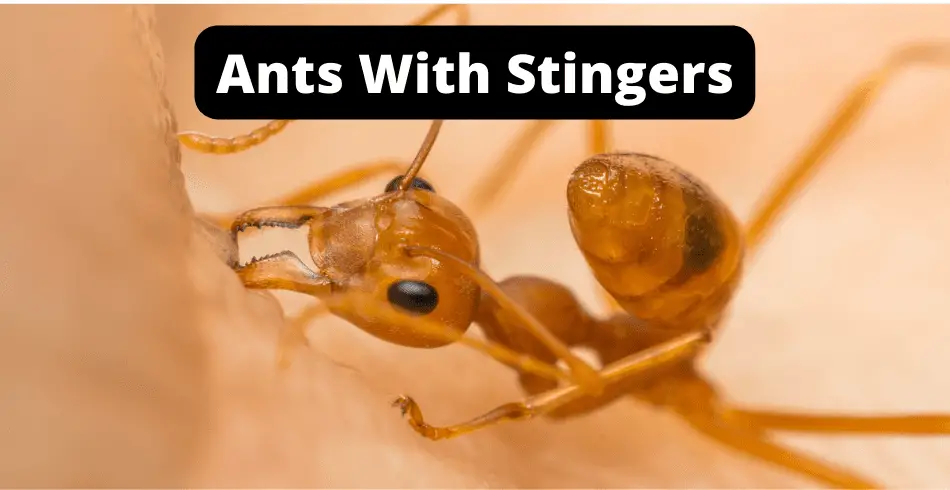One of the biggest misconceptions about ants is assuming everything is an ant bite. This is very rarely the case. With ants, you should be worried about the sting, not the bite.
Ants and insects with stingers belong to the order Hymenoptera. These include imported fire ants, bulldog ants, harvester ants, the common black ant, the feared bullet ants, and the Giant Amazonian ant. The stinger is a biological adaptation for fighting enemies and subduing prey.
We go over a complete list of ants that sting, some insights into how you can avoid being stung, and the difference between a bite and a sting from an ant.
Why do some ants bite and other ants sting?
Some ants can only bite and not sting due to an evolutionary loss of their stinging capability. The ants that lost the stinging ability have adapted other hunting and defense mechanisms. Some spray formic acid when threatened, while others attack prey or enemy in groups.
Biting and stinging ants use these biological features to prey or defend themselves.
This adaptation has left some ants and insects only capable of either stinging or biting. (Source)
For instance, bees and wasps do not bite, and they only sting.
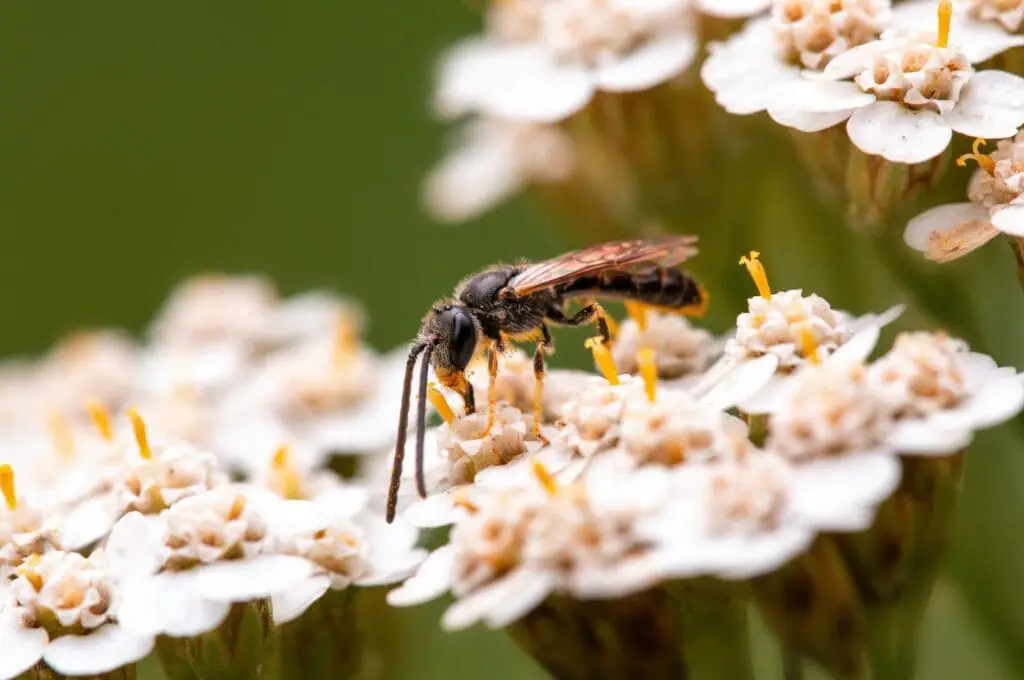
In contrast, the Dorylus ant species (driver ants or safari ants) only bite and do not sting. They also forage and defend their territory in large swarms.
Caste differences in a colony also determine ants that bite and those that sting.
Female ants have a stinger, while the queen and the male ants do not.
In situations where the colony is under attack, the queen ant and the male ant will bite instead of stinging.

What is an ant stinger?
A stinger is a sharp body organ ants use to pierce the exoskeleton of prey or enemy skin. It’s located at the tip of the abdomen. Using the stinger, stinging ants puncture the body and inject poison at the sting sites.
When stung by an ant, humans experience a burning sensation at the sting location.
While most ant stings are not very serious, ant stings can still cause mild swelling.
Severe or multiple stings cause pain lasting several hours.
The sting can cause severe chest pain, low blood pressure, or anaphylactic shock if you’re sensitive to the ant venom.

What type of ants has stingers?
Most ant species have stingers. Irrespective of the ant’s size, the stinger’s purpose is subduing prey or self-defense. Notably, though, among the big ants such as bullet and bulldog ants, the impact of the stinger on humans and animals is usually not lethal but very painful.
Below is a list of some stinging ants;
Bull ants
One of the biggest ants in the ant species, Bull ants, inhabit Australia and are found freely in nature.
Due to their size, bull ants inject a tremendous amount of venom into their target.
A bull ant stings repeatedly, but unlike fire ants, they do not attack in swarms.
Being stung by several bulldog ants may cause anaphylactic shock.
Deaths resulting from bull ant venom poisoning have been reported.
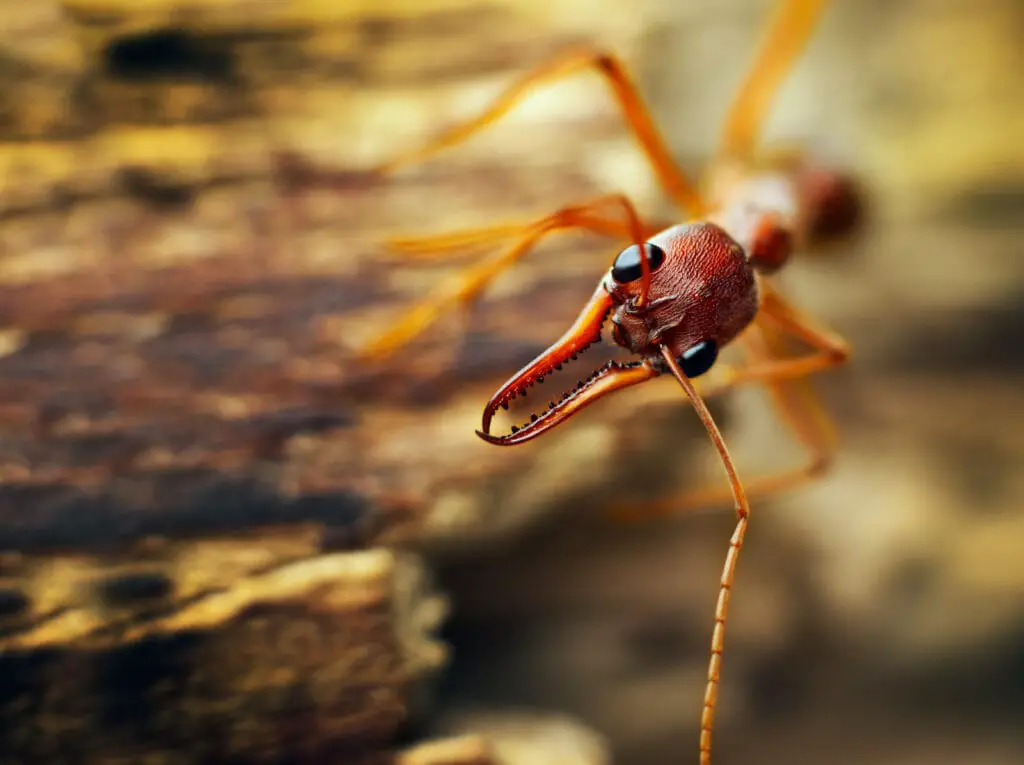
Bullet ants
The Bullet Ants are exclusive to the South American rainforests.
They are found in Brazil, Venezuela, Peru, and Bolivia.
They form nests close to tree bases and forage in and around trees.
Its sting is lethal to small prey and other ants.
Unlike other ant sting pains that usually last a few hours, the sting effect from the Bullet Ant lasts up to 24 hours.
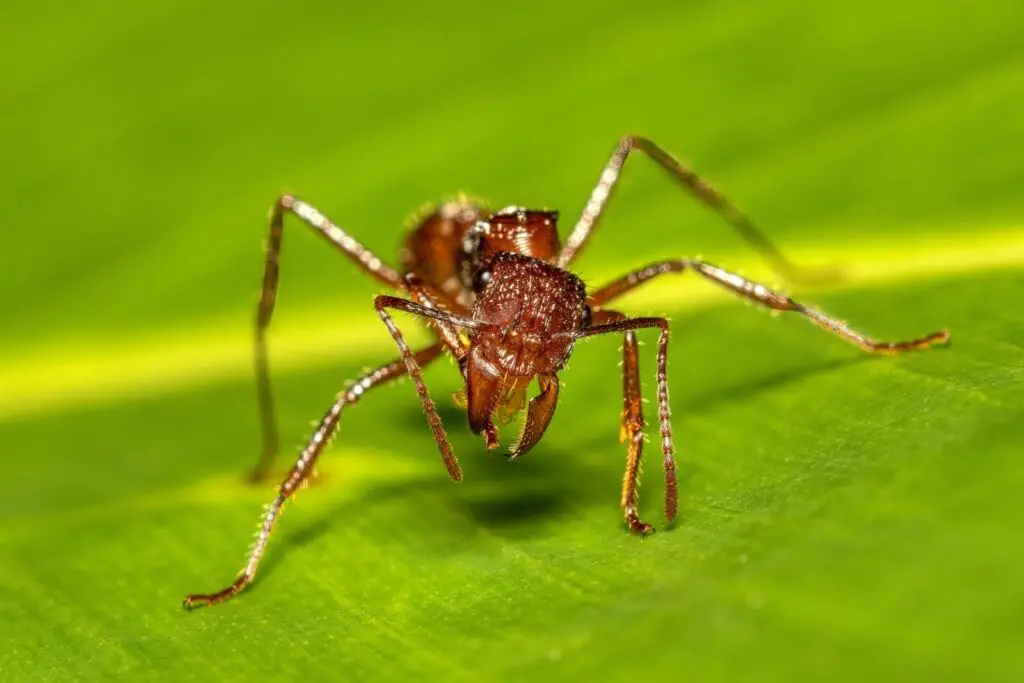
Fire ants
Non-native to the US, imported fire ants were introduced from South America.
They are a lingering danger to humans, pets, and animals in most Southern states in America.
Unlike big ants that live in the forests, fire ant nests are prolific in domestic spaces.
They make mounds in lawns, gardens, trees, and habitable soil.
Fire ants are ferocious stingers.
Their venom is usually not lethal but can still cause life-threatening situations.
To persons with underlying health conditions, the effects of their sting can lead to death.
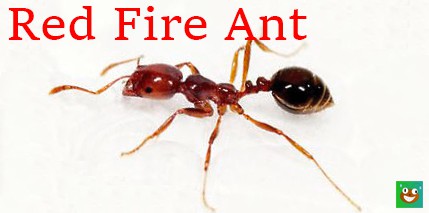
Harvester ants
These are common in some states in the US, including California, Florida, and Texas.
They live in the open fields. Harvester ants sting, and the pain they inflict is rated slightly worse than that of bees.
There are many different types of harvester ants, and the sting of the red harvester ant is the least painful.
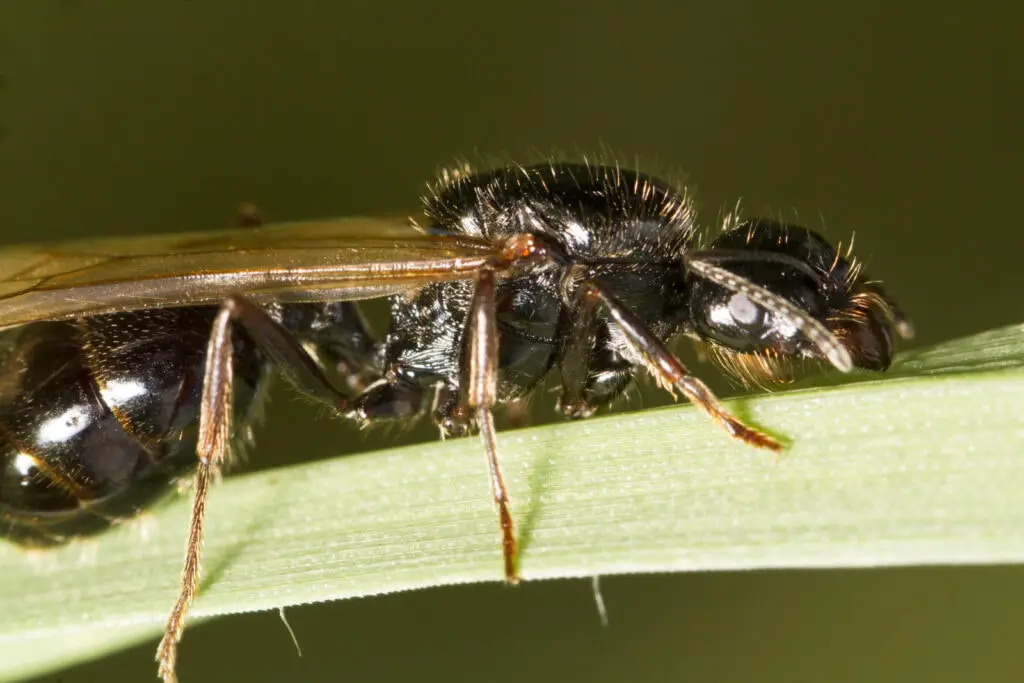
Giant Amazonian ant
The giant Amazonian ant is claimed to be the largest ant in the world.
It’s a predominantly Southern American species.
This ant has a painful sting that causes some discomfort.
If stung, the pain disappears in a few hours.
Its poison is only lethal to small prey, not to humans.

The Green ant
Similar to the bull ant, these are inhabitants of Australia.
They live naturally in fields and thus can occupy lawns and domestic spaces.
They weave their nests in tree leaves and shrubs, and disturbing their nests triggers a defense action.
They inflict a painful bite that causes redness and itchiness in the bite area.

Common Black Ants (Small Garden Ant)
Black ants are the most familiar type of ants in most homes in the US and globally.
The small garden ant does sting.
The impact is small and barely noticeable when humans or pets are stung.
This is because the common black ant’s stinger is very tiny.

Dinoponera Quadriceps
This ant species is among the largest ants.
They inhabit North Eastern Brazil.
Most ants amongst Dinoponera quadriceps have a painful sting; they forage individually and do not attack in swarms.
The stinger pain goes away in a few hours. (Source, Source)
Why do some ants have stingers and others don’t?
Some ants lack stingers due to evolutionary changes. Stingers in most ants and insects are for defense and attacking prey, and the stinger venom quickens the process of subduing the target. Ants without stingers have developed alternative biological features and coping mechanisms: some bite, and others attack in large groups.
In ants species, etymologists estimate that about 71 percent of ants sting.
The remainder has adaptive behaviors such as biting.
After biting, some, like the driver ants, secrete dissolving solutions into the muscles of their prey.
The bite solution accelerates the melting of the prey’s body parts.
Others spray harmful formic acid on the target.
Other stingless ants attack in swarms, some spray harmful formic acid on the target, while others utilize their quick attacking speed to overwhelm the prey.
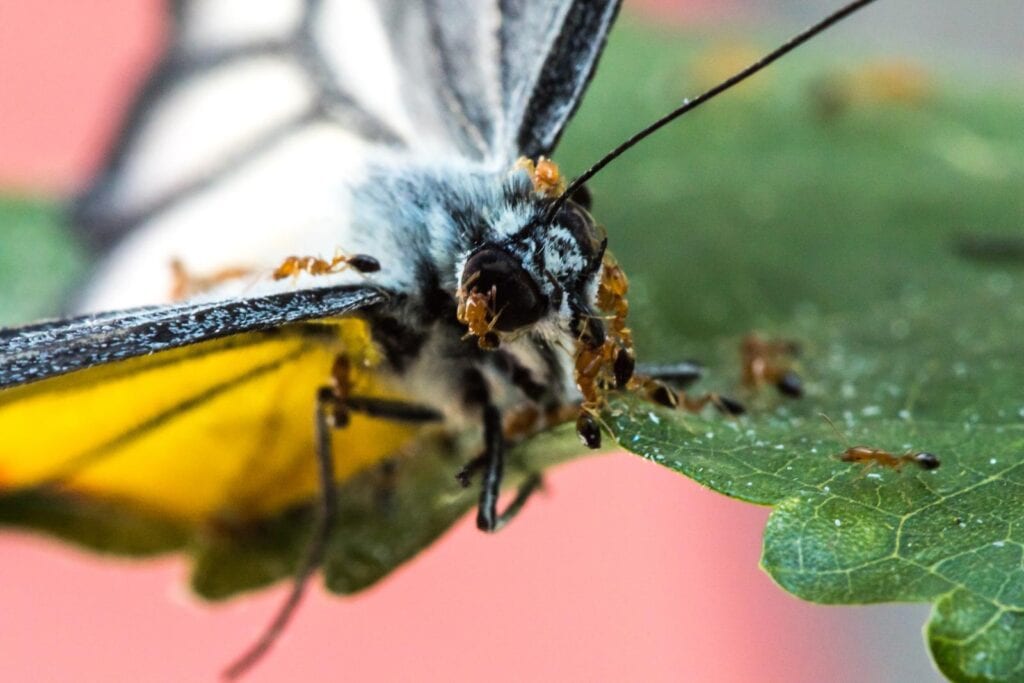
What black ants have stingers?
Surprisingly, the common black ant stings. It has a small stinger in its abdomen. Due to its size, the stinging impact is negligible, leading to the false conclusion that black ants don’t sting. Another misconception is that the black carpenter ants sting.
Generally, the Lasius species, where black ants belong, stings.
Carpenter ants, even though sharing the same color, are not the same as common black ants.
The Camponotus species, where carpenter ants belong, bite and do not sting. (Source, Source)
A carpenter ant bites and pricks with its strong jaws. Due to the formic acid of the carpenter ant, the bite is usually very itchy for humans.
The bite effects are short-lived and not nearly as painful as being stung.
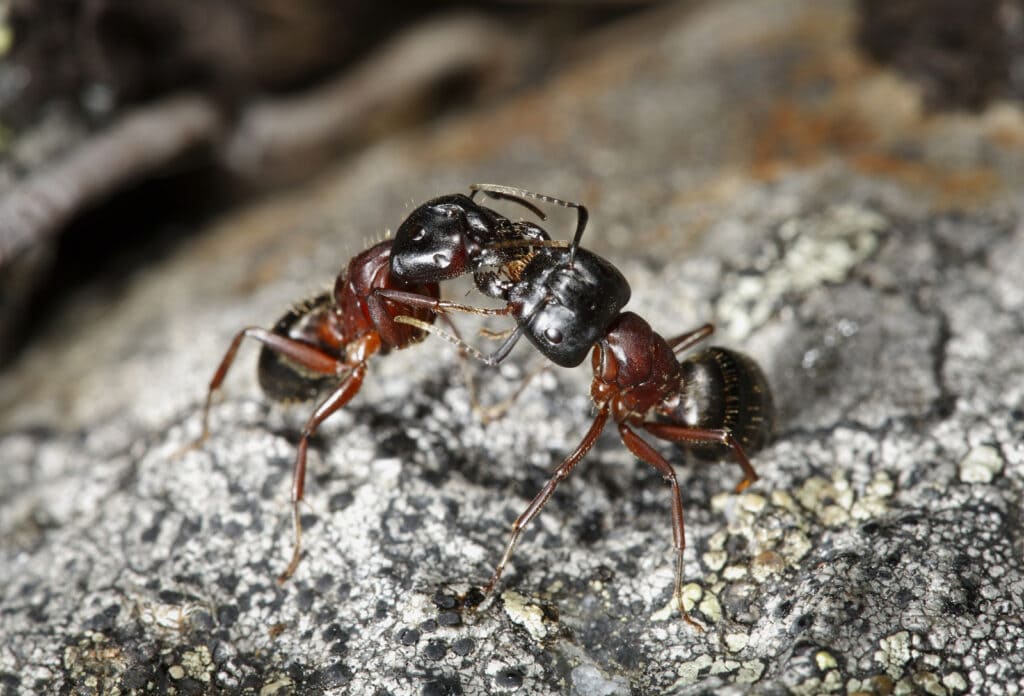
How a Fire Ant Stings
Fire ants bite and sting when provoked. Even the slightest disturbance of a fire ant nest triggers a quick defensive surge by thousands of worker ants. Any movement in a fire ants territory makes them feel threatened, prompting them to rush towards the source of the disturbance.
Even though they attack as a group, an individual fire ant may sting multiple times. This repeated stinging makes fire ants extremely dangerous.
Fire ants also bite, making them even more hazardous.
When a fire ant bites, it uses the jaws to pivot its body and stings repeatedly and quickly.
What are the possible allergic reactions to fire ant stings?
Fire ants inject venom into the body at the sting site. Severe allergic reaction signs include diarrhea, stomach pains, difficulty breathing, chest pain, anaphylactic shock, and extreme sweating. These severe allergic reactions include topical symptoms such as a burning sensation and painful swelling.
Ant stings are itchy and cause a burning irritation. The bite site then swells.
The area stung by fire ants may develop hives with a circular pattern. In some people, the bite progresses and develops into blisters.
Venomous ant bites and stings can cause life-threatening situations.
When a victim shows acute poisoning signs, seek medical attention immediately. (Source)

How To Treat Fire Ant Stings
Treating fire ants stings depends on the severity. A fire ant bites and stings simultaneously. So, remove any ants stuck on the skin before treating ant bites. Then, wash the affected areas. Cool compress the stung sections to relieve pain with ice or cold water.
Where sting scars have turned to welts, wash the bite area thoroughly.
Do not pop the pimples, as this opens you up to getting an infection.
Mild topical antiallergens are helpful when the symptoms are pretty advanced.
If the pain is excessive, swallow over-the-counter painkillers.
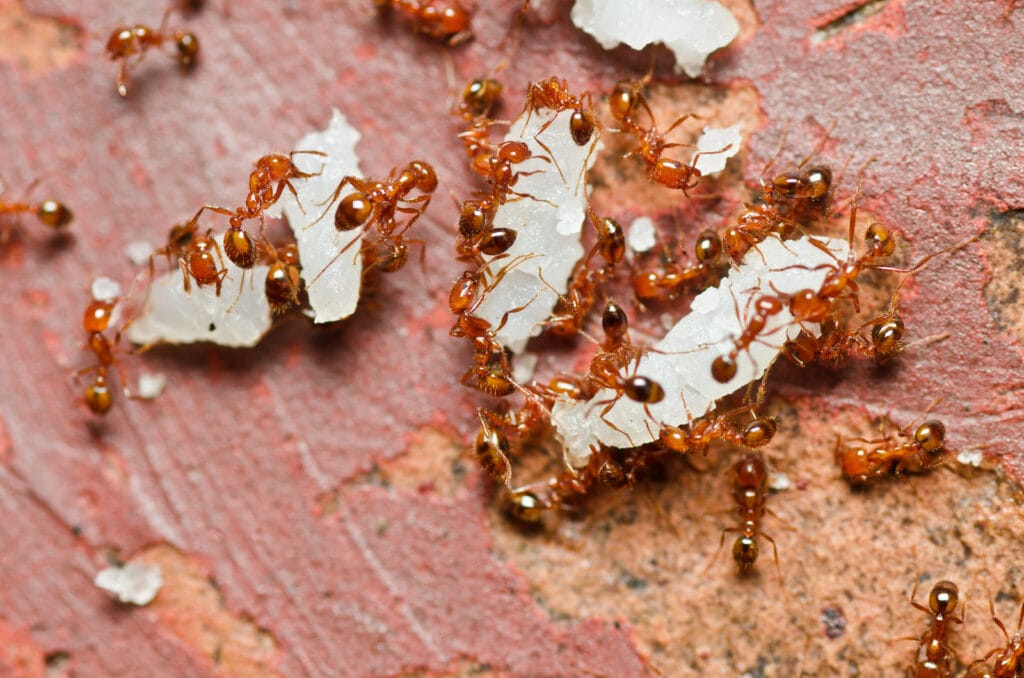
Staying Away From Fire Ant Stings
The obvious way to avoid being stung by fire ants is to keep away from ant infestation territories.
Do not disturb a fire ant nest. If you accidentally bump into or get attacked by fire ants, evacuate the area and shake as many as possible off your clothes and body.
Wear protective clothing when enjoying outdoor activities in areas frequented by fire ants or other venomous ants.
Frequently Asked Questions
While we can’t get to every question, we hope the answers below help clarify some things.
What do ant bites look like
Ant bites take a circular pattern. When the ant bites, it pivots itself with the abdomen and makes a circular motion as it inflicts multiple stings. After some time, the area may fill with water. Bites look much different than stings and hurt much less.
Should you pop fire ant bites
Medics strongly advise against popping fire ant bites (stings). Opening the blisters up increases the chances of infection. Instead, wash sting sites with cold water and soap. Keep an eye on them to see if the area gets any worse. If not, leave them to heal by themselves.
How long do ant bites last?
It depends on the type of ant and the number of ants that have bitten you. Most ant bites go away in a few hours, and the pain can last up to 24 hours when a sting accompanies a bite, as is the case with bullet ant bites and stings.
Is a fire ant sting or bite itchy
Ant bites are itchy. If the ant is the type that bites and stings, the venom causes a burning irritation. Multiple stings and bites are not only itchy but very painful. If your symptoms progress, seek medical attention.
